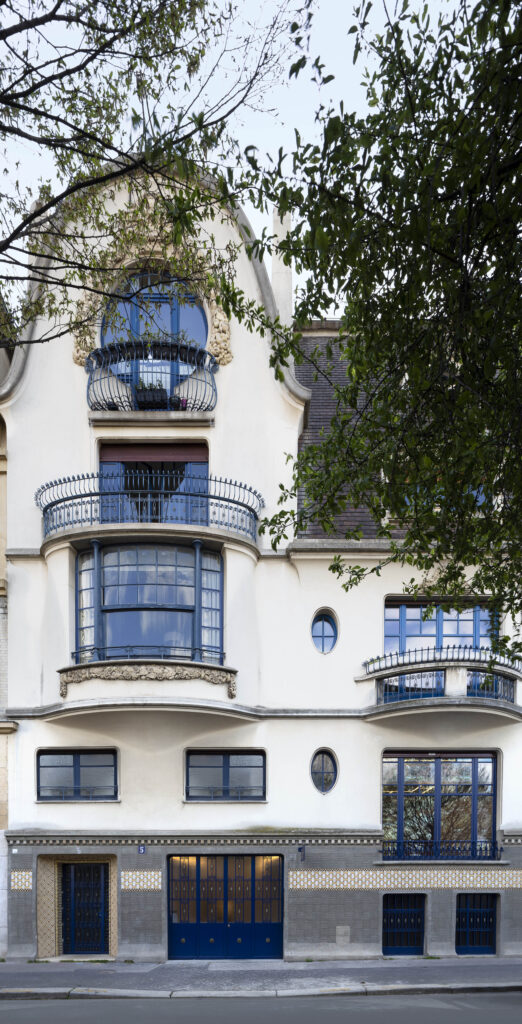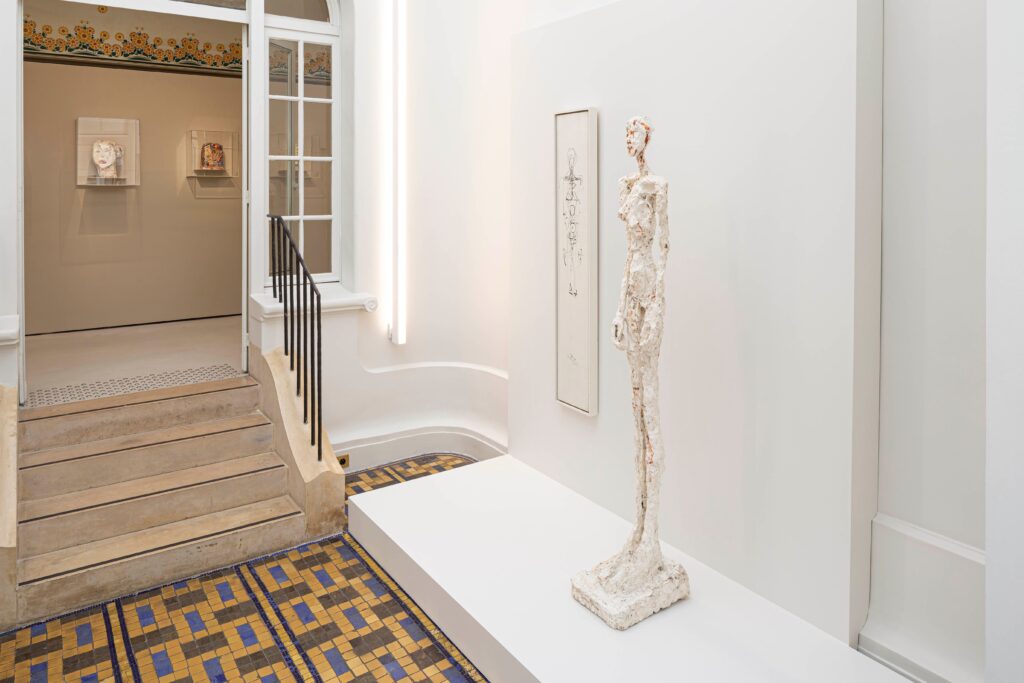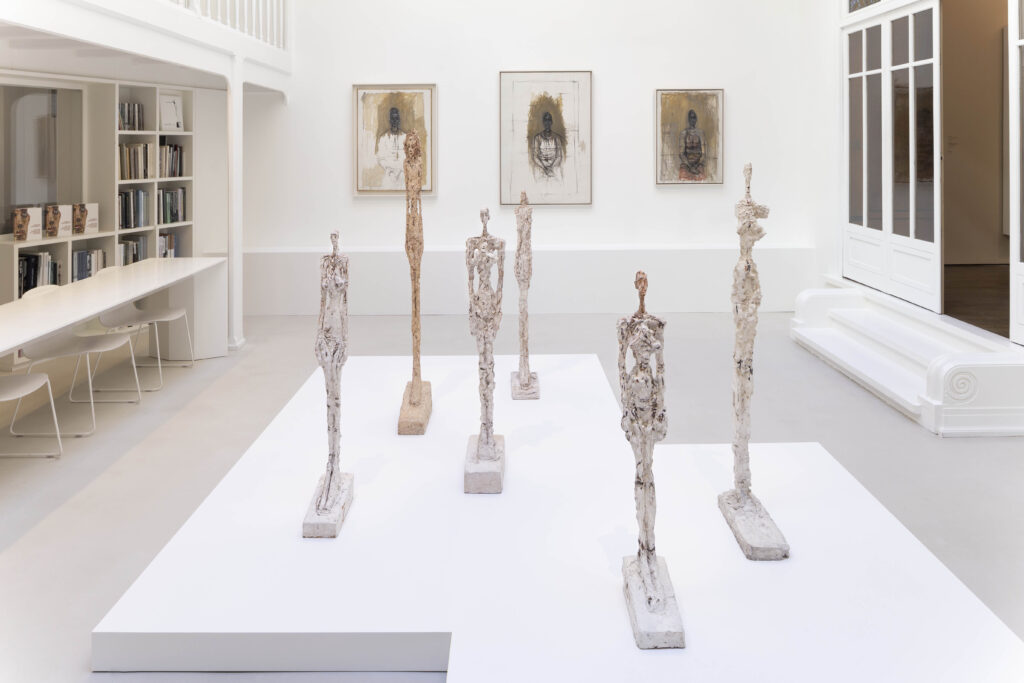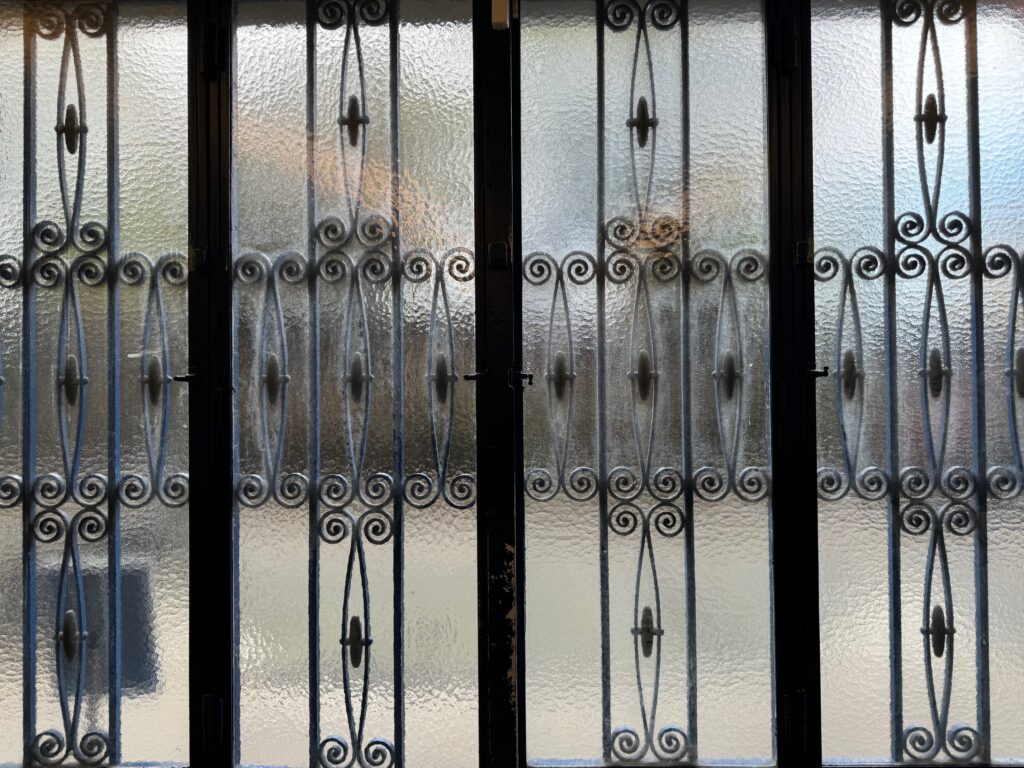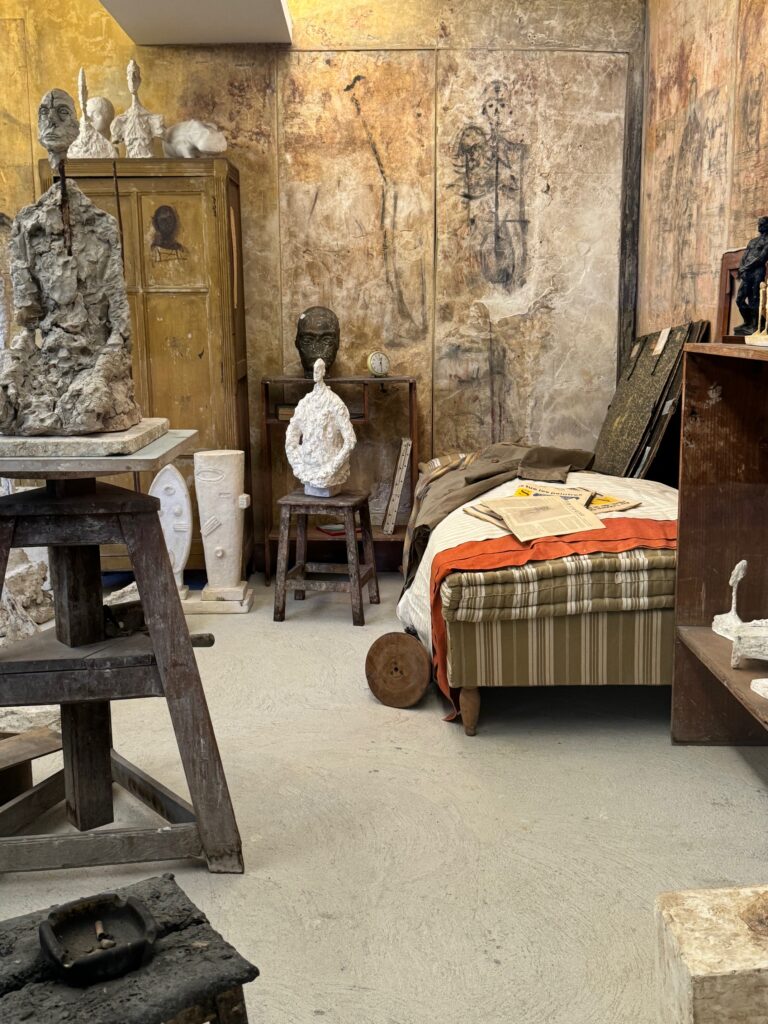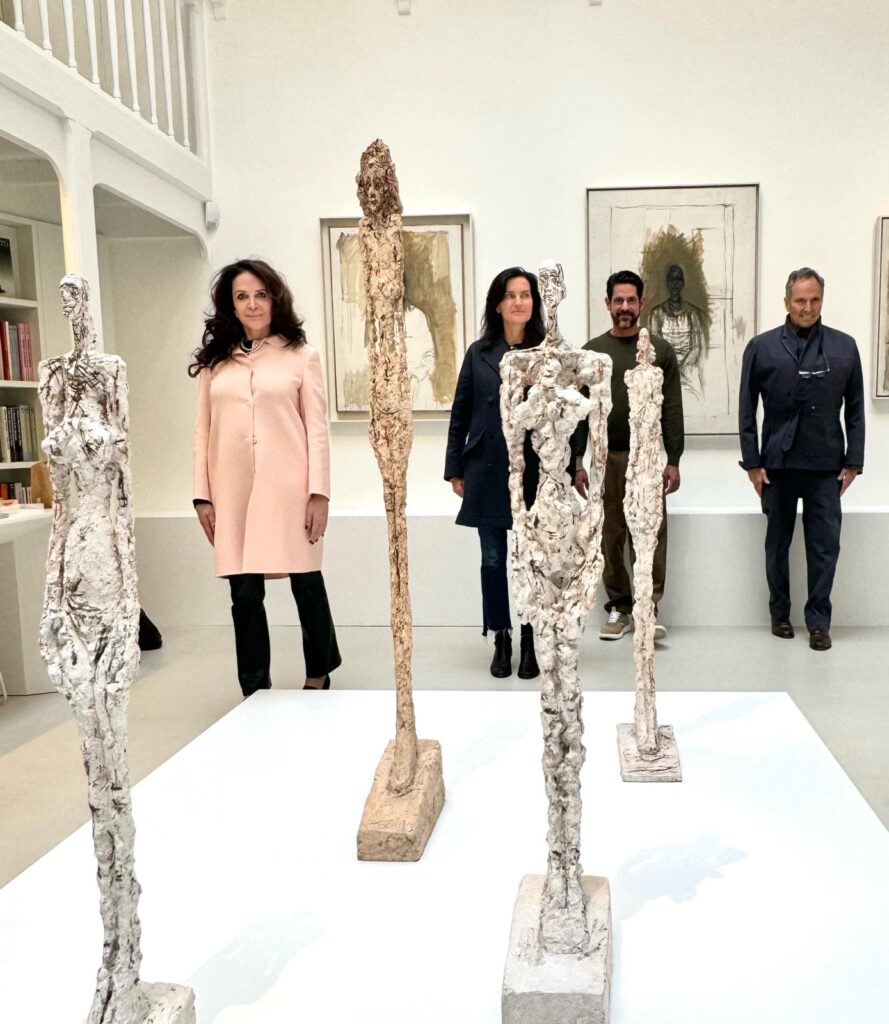
While the work of Swiss artist Alberto Giacometti (1901-1966) has proven to be highly famous, prolific, costly, and widely admired, the newly opened Institut Giacometti (opened since 2018) brings to light many unknown aspects of his work, and thus a chance to get a new, fresh look at his oeuvre. Located on a quiet, picturesque street in the Montparnasse neighborhood of the 14th arrondissement—where Giacometti and many artists of his generation lived and worked—this newly-founded arm of the Fondation Giacometti presents curated exhibitions, supports research, and offers classes to the public. It also allows visitors to view the work of the famed surrealist artist so closely that you feel as if you, are visiting a private collection.
The first thing you see as you enter the building is Giacometti’s famed studio, known from the many photographs taken during his lifetime. Reconstructed to accurately represent the working studio in Paris, you cannot help but be surprised at the small space where he created some of the most magical works of the 20th century. Some of his large sculptures were made during WWII while he was in Switzerland. Even when Giacometti became a successful artist and could afford a larger studio, he still preferred to stay at his beloved space on Rue Hippolyte Maindron. His widow was the one to dismantle and saved the studio, including the walls and all of its contents. The reconstructed studio was made with these walls, which are covered with sketches, the original furniture, clay models which can be seen in historic photography of the studio, and sculptures from the Foundation’s collection, consisting of approximately 10,000 works.
The institute presents four temporary exhibitions a year and the current one, entitled The Painted Works in Plaster and in Bronze, is particularly surprising and beautiful. We learn that in every stage of his career, Giacometti expressed a desire to tightly connect sculpture and painting by painting on his plaster and bronze sculptures. From his earliest to those he created close to his death, he made approximately a hundred painted plasters and dozens of painted bronzes, perceiving them as “painted like paintings,” in his words. Seeing them grouped together under one roof, you can see the way in which the artist took up his palette and paint brushes and ‘breathed life’ into his sculptures with the use of paint. He had been clearly influenced by art of archaic Antiquity, Egyptian art, Italian Primitives, and non-Western arts. The work is beautifully lit, and the exhibition had a handful of visitors, turning it into a private experience. What a treat, I thought, because as we know, every recent museum retrospective of the Swiss architect was packed and overcrowded.
I knew before attending that I was going to have an exceptional experience visiting the new institute, because I have always found Giacometti’s fragmented figures and drawings to evoke both emotions and memories. However, there was a surprise that I did not expect. The institute is housed in a landmark building—a most exquisite Art Nouveau mansion which allows you to experience old Paris, the one existed before Giacometti left his native Switzerland (1922) to move there. It is the former private studio and home of prolific interior designer and tastemaker Paul Follot, which he built for himself in 1911. Follot made his name with the best of French products after he became the head of the Pomone decorative art workshop of Le Bon Marché department store. He would eventually found his own company where he created furniture and objects for Christofle, Savonnerie, Wedgwood, and more. As a true tastemaker with an enormously successful career, Follot built his dream house in Montparnasse with blue ironwork, stain glass windows, and decorated in the gesamtkunstwerk manner of the Wiener Werkstatte: mosaic tiled floors in blues and gold, tapestry walls, exquisite Art Nouveau fireplaces, and paneled rooms. The experience of visiting the Institut Giacometti merges art, design, and architecture as dreamy and extraordinary as Giacometti’s masterpieces.
